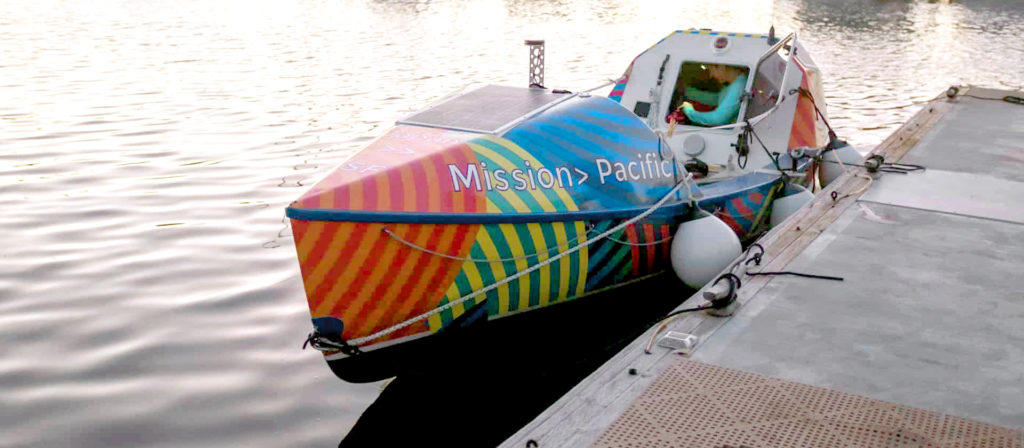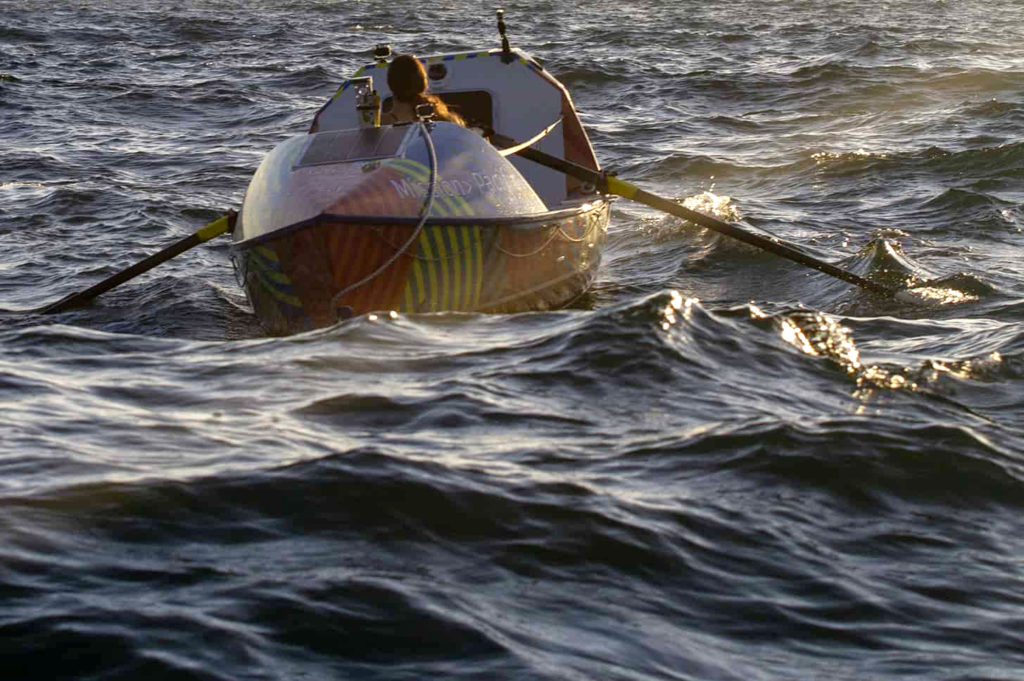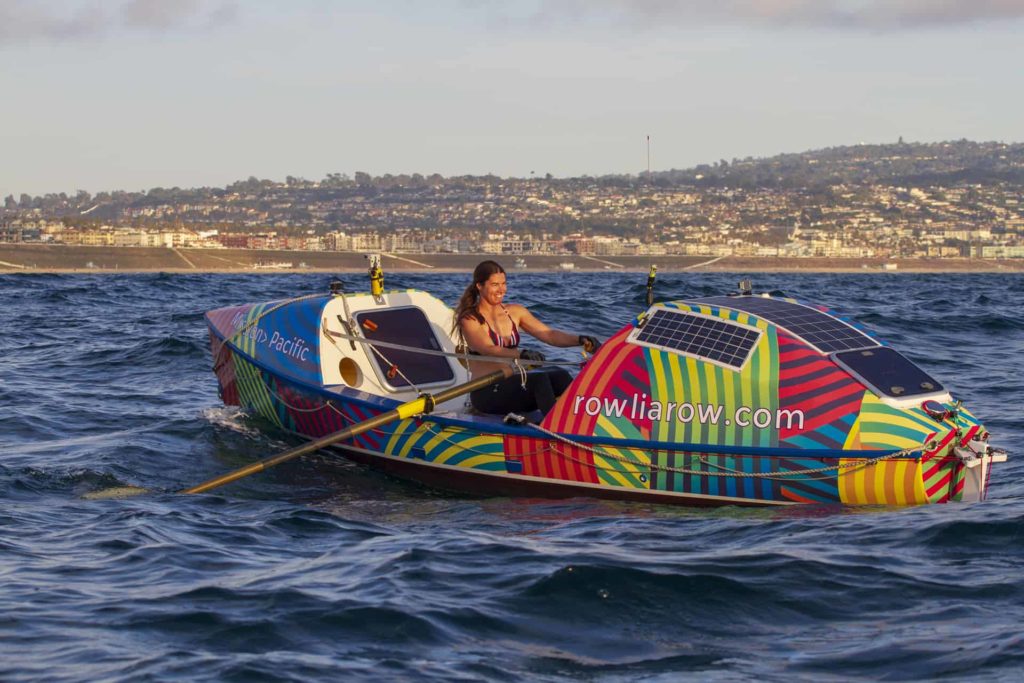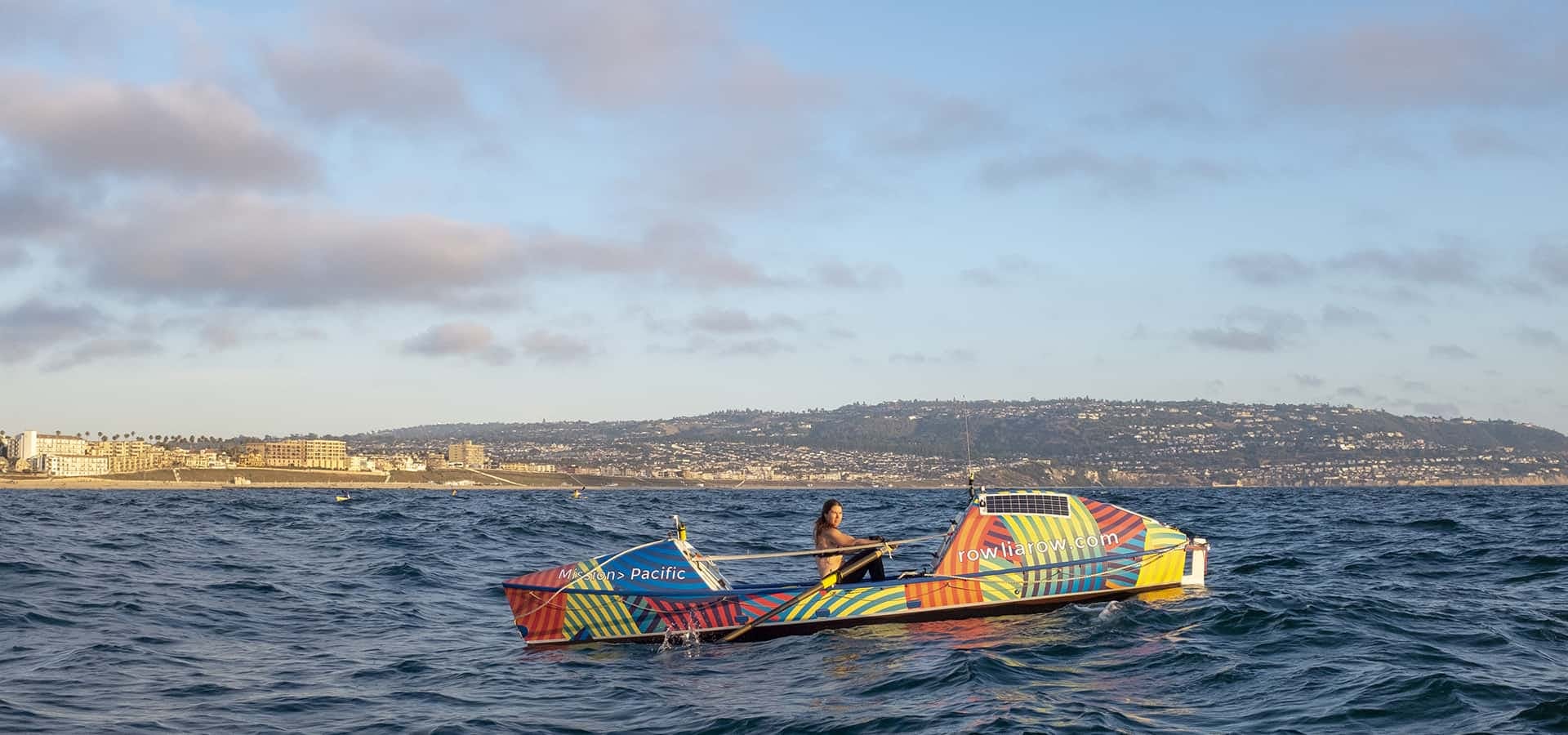“I went in a hole in a matter of hours,” shares Lia Ditton, a 38-year-old professional sailor and ocean rower about a tenuous moment in her recent journey from San Francisco to Southern California. “The wind changed direction, and I was at a convergence point of shifting with no wind. And that’s not great.”

Lia knew if she moved to the east, she’d be at risk of blowing on the shore. So, for while, it was a cat and mouse game with the shipping lanes. “There was one morning when one of the empty car carriers crept up at 18-20 knots (25 miles per hour) … fast on the ocean,” she recalls. “It was that morning light where nothing is really that clear. And I realized it was impossible to see what direction it was going in because it has no bough. It was like a moving brick.”
In the haze, for the first time in her life, Lia admits she was actually terrified. “My whole body physically shook. I was still functional, and I still got on the radio to communicate with the captain, but I was in the physical embodiment of fear that I was going to be mowed down by this ship. That was probably one of the closest encounters I’ve had in my life.”
Born in London with a background in art, Lia has been sailing for nearly two decades. She was the youngest competitor and only woman to complete the OSTAR 2005 single-handed transatlantic race. As a rower, she traveled from La Gomera in the Canary Islands to Antigua in the Caribbean, a 3,000-nautical-mile journey that made her the 53rd woman to row the Atlantic Ocean and the 64th woman ever to row any ocean.

But now she has her sights set on another body of water closer to home … the Pacific.
Eighteen people have attempted to row the Pacific, and only two men have made it. Lia wants to be the first woman to accomplish the grueling feat. In March 2019, she will depart from Choshi, Japan toward the U.S. … 5,500 nautical miles.
But first, she must build, condition and learn—thus the summer training run along the California coast—a 400- to 500-mile stretch.
“I chose departing out of San Francisco because a lot of people say it cannot be done,” Lia explains. “That you can’t get off the Point Conception shelf, that you can’t get away from the core of the tide and the prevailing conditions that want to push you back in. And rightly so it was an enormous challenge.”
As she rounded Point Conception, she encountered a collision point of two weather systems. Then the worst possible scenario happened. “A Santa Ana blast hit me near Goleta,” she says. “30 knots, 100-degree heat coming off land. It was a harrowing night at sea with waves breaking clean over boat. I’ve never felt so broken.” Although sleep deprived from the dramatic night prior, she would go on for 30 miles the following day. “It was a huge test and far more test than I was anticipating.”

With the Pacific row only months away, Lia knows a challenging test run will give her more advantage in March, when she’s deep in the middle of the ocean. “What it feels like to be motivated by a limited supply of food. Because that is a real consideration when I’m rowing from Japan,” she says. “It could take five months. It could take eight months. You need to have that pulse in your system. We need to get on with this.”
She recalls getting off the Continental Shelf with waves of 30 to 40 feet. “Wobbly mountains,” she refers to them. “I was in a very wild environment. It’s what I wanted. A lot the systems I went out there to test were tested.”
The men’s record for the Pacific crossing is 134 days. Lia plans to take enough food for five months. “You have that edge that food is going to run out,” she says. Those rations include two freeze-dried meals a day, snacks (mostly nuts), meal replacement powders and a desalinator onboard to convert seawater to drinking water.
Lia will also wear a tracker that pings her location on a map every 15 minutes. Her sponsor Kenzen will provide a patch placed under her ribs to stream her heart rate, blood pressure and hydration level. She also plans to blog and upload video during her journey. “I’m pretty connected,” she says.

Then there’s sleep. To get her sleep cycles (40-120 minutes each) she will either let her boat drift or employ a sea anchor (basically a big parachute) to minimize risk. She reveals, “Strangely, I feel alright in the morning.”
A professional sailor and licensed captain when she’s not trying to break world records, Lia says she takes on a “crazy” project every four or five years. With rowing, she gets both the simplicity and proximity to the water she loves. “When I’m out there I’m very lucky. I have a front row seat to the best cinema in the world.”
Lia also hopes the Pacific row will inspire women and young girls to do more to be active and empowered. “I’ve become passionate about the education side of this project,” she adds. “I’ll be offering a free, science-based pack for schools to follow alongside on my journey.”
Lia admits it’s unusual to see a woman, alone, rowing deep in the ocean. She remembers a Mexican Navy boat coming upon her thinking she needed rescue. After assuring them that she was OK, she asked the men for a report on weather conditions. They told her, “Tomorrow it will be sunny.”










